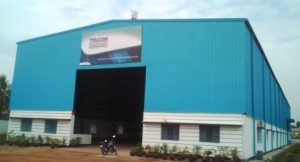
PEB stands for “Pre-engineered Building.” PEB construction refers to a specific method of designing and fabricating buildings using a systematic and efficient approach. In PEB construction, the entire building is pre-engineered and pre-fabricated off-site, and then assembled on-site. This process is known for its cost-effectiveness, speed of construction, and flexibility in design.
The Amiya Group of Companies has established themselves as the benchmark in pre-fabricated modular steel and metal buildings. AMIYA offer customized solutions for commercial and non-commercial building structures Delivered with Precision and Care with 70 years of Excellence.
Key features of PEB construction include:
Engineering Design: PEB structures are designed by engineers using computer-aided design (CAD) software. This allows for precise planning and optimization of the building structure.
Factory Fabrication: Components of the building, such as beams, columns, roof trusses, and wall panels, are manufactured in a factory setting. This prefabrication process ensures high quality and consistency.
Ease of Assembly: PEB components are designed to be easily assembled on-site. This leads to faster construction times compared to traditional methods, reducing overall project durations.
Customization: Despite the standardized nature of PEB components, there is room for customization. Designers can adapt the dimensions and features of the building to meet specific project requirements.
Cost-effectiveness: PEB construction is often more cost-effective than traditional construction methods because it minimizes on-site labour requirements and construction time.
Energy Efficiency: PEB buildings can be designed with energy-efficient features, such as insulation and ventilation systems, contributing to sustainability and reduced operational costs.
PEB construction is commonly used for various types of buildings, including warehouses, industrial facilities, commercial buildings, and even some residential structures. It is especially favoured for projects where speed, cost efficiency, and flexibility are critical factors.
